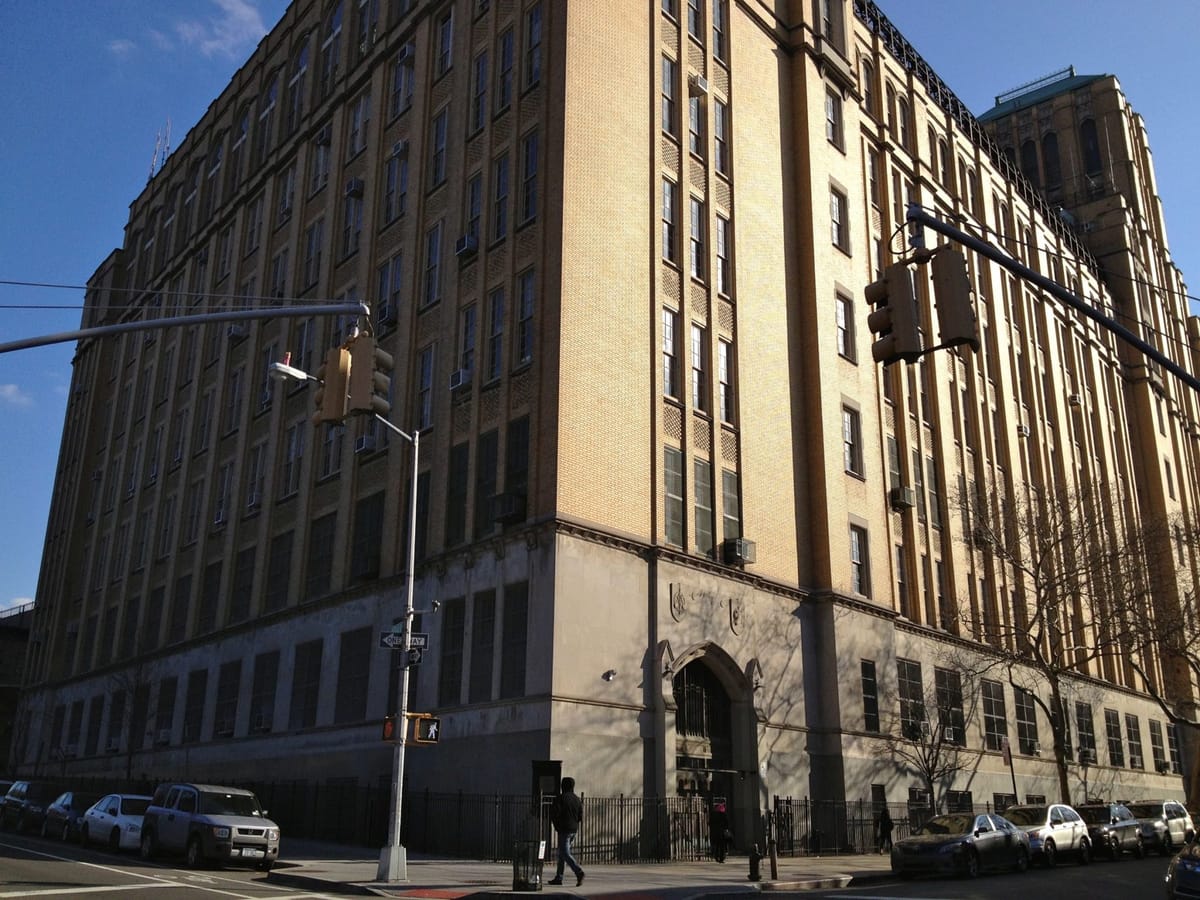Close The Schools! Brooklyn Tech Teacher On The Reasons Why


By Anastasia Amanda Visbal / NYC educator, Brooklyn Tech High School
All New York City public schools should close today.
That is the best decision that the Honorable Mayor Bill De Blasio can make for the people of New York. Top medical officials recommend social distancing as the number one strategy to prevent the spread of COVID -19 which is now a pandemic. Yet, we continue to gather in huge groups in dirty school buildings across NYC. At my school, approximately 7,000 people, including students, faculty, support staff, security, and all other visitors, walk daily through its doors, bringing with them germs from the five boroughs and beyond. Dangerously unsanitary conditions have existed at the school for decades, but similar conditions exist system wide at other schools.
While leaders contemplate action, teachers have become drafted soldiers in the front lines of a war against a raging, silent and invisible enemy. Last week we were armed with a bottle of purell and a 35 count of disinfectant wipes and we marched off into the combat zone to wait for a call to battle that never came. We were unsure what to do with these grossly inadequate supplies as each of our classrooms is packed to the gills with 34 desks and we face 170 students daily in very close proximity. Generally, the school has been slow to respond. The school’s daily announcements, which are online and heard over the PA during 3rd-period classes, have still to include hand hygiene, cough etiquette, and proper cleaning and disinfectant procedures of personal areas like desks, computers, and other spaces.
Because of severe overcrowding conditions, we must immediately vacate classrooms when not teaching, then walk shoulder to shoulder with 6,100 students through hallways, stairwells, and elevators, only to go into a designated department office that’s shared with 30-40 people. With no teachers’ break room, cafeteria, or lounge, we eat and work together at large tables with clicking laptops and stacks of student homework, essays, exit tickets, and other assignments – paper that goes back and forth through many hands and has great potential for the spread of this aggressive disease. I have often seen a teacher take a bite of a sandwich or a spoonful of soup and then grab the pen and mark another paragraph of a student essay.
Other school practices and protocols promote the spread of the Coronavirus. For example, as employees enter, after touching surfaces on the bus, the train, the rails, or the uber, they move their card from one wooden time-card closet to the other. Hundreds of people open and close these ancient structures to complete the morning time card routine. Most teachers pick up an attendance folder after that and start the trek up to their classrooms, touching elevator buttons, handrails, and doorknobs along the way. Many first period teachers walk directly into their classrooms after their commute while others to copy machines to get ready for class and prepare handouts for students. Again, routines that perpetuate germ transmission.
To make matters worse for the school community, life proceeds as usual. The recent soft lock-down drill went on as scheduled. Everybody dutifully followed orders, but many voiced deep concerns about students huddling together on the floor of their classrooms and adults walking from door to door checking doorknobs! One administrator even announced that spring teacher observations would begin the week of March 16. Administrators expect to see teachers actively walking around the classroom, asking dynamic questions and students in robust discussions – exactly the behaviors we’re supposed to avoid at this time. This observation cycle is the second of two “pop quizzes” that determine a teacher’s yearly evaluation grade. No pressure teachers.
Other examples of germ hotspots abound on computers, water fountains, cafeteria buffets and tables, swinging doors, student ID’s, and especially bathrooms. But what I describe is only a partial picture of a vicious germ cycle within a diverse group of people whose social webs extend to thousands and thousands of people. Today, open schools unnecessarily put many New Yorkers at risk of exposure to the coronavirus. Look at outbreaks in Italy, China, Iran, Korea and Japan to understand the sobering facts and devastation. It makes sense to close schools now, disinfect them thoroughly and re-open sometime after spring break. I know there are concerns about the safety and services we provide to millions of children but leaving them open is even more dangerous as the invisible enemy rages on.
By Anastasia Amanda Visbal / NYC educator, Brooklyn Tech High School



